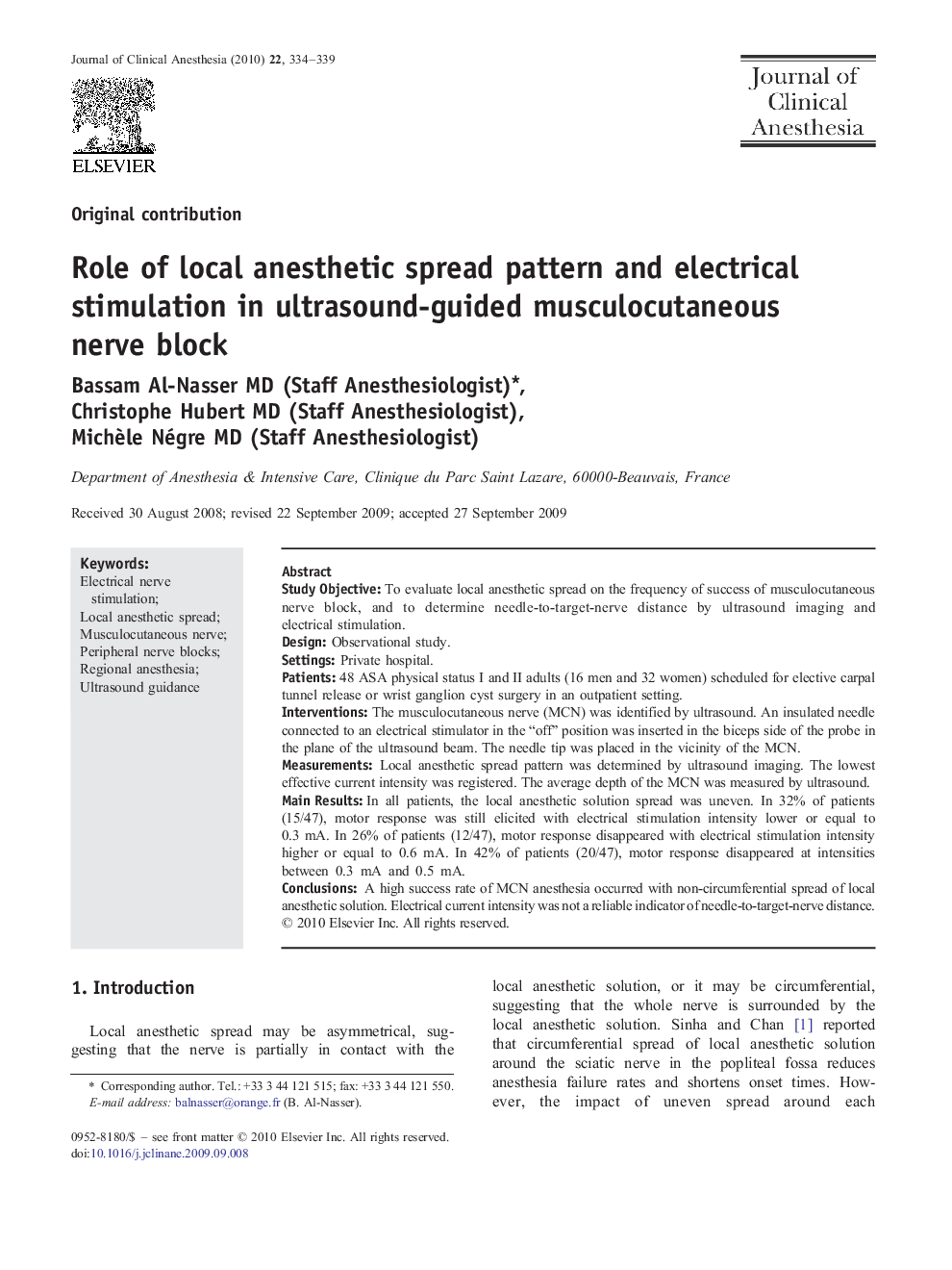| Article ID | Journal | Published Year | Pages | File Type |
|---|---|---|---|---|
| 2763068 | Journal of Clinical Anesthesia | 2010 | 6 Pages |
Study ObjectiveTo evaluate local anesthetic spread on the frequency of success of musculocutaneous nerve block, and to determine needle-to-target-nerve distance by ultrasound imaging and electrical stimulation.DesignObservational study.SettingsPrivate hospital.Patients48 ASA physical status I and II adults (16 men and 32 women) scheduled for elective carpal tunnel release or wrist ganglion cyst surgery in an outpatient setting.InterventionsThe musculocutaneous nerve (MCN) was identified by ultrasound. An insulated needle connected to an electrical stimulator in the “off” position was inserted in the biceps side of the probe in the plane of the ultrasound beam. The needle tip was placed in the vicinity of the MCN.MeasurementsLocal anesthetic spread pattern was determined by ultrasound imaging. The lowest effective current intensity was registered. The average depth of the MCN was measured by ultrasound.Main ResultsIn all patients, the local anesthetic solution spread was uneven. In 32% of patients (15/47), motor response was still elicited with electrical stimulation intensity lower or equal to 0.3 mA. In 26% of patients (12/47), motor response disappeared with electrical stimulation intensity higher or equal to 0.6 mA. In 42% of patients (20/47), motor response disappeared at intensities between 0.3 mA and 0.5 mA.ConclusionsA high success rate of MCN anesthesia occurred with non-circumferential spread of local anesthetic solution. Electrical current intensity was not a reliable indicator of needle-to-target-nerve distance.
